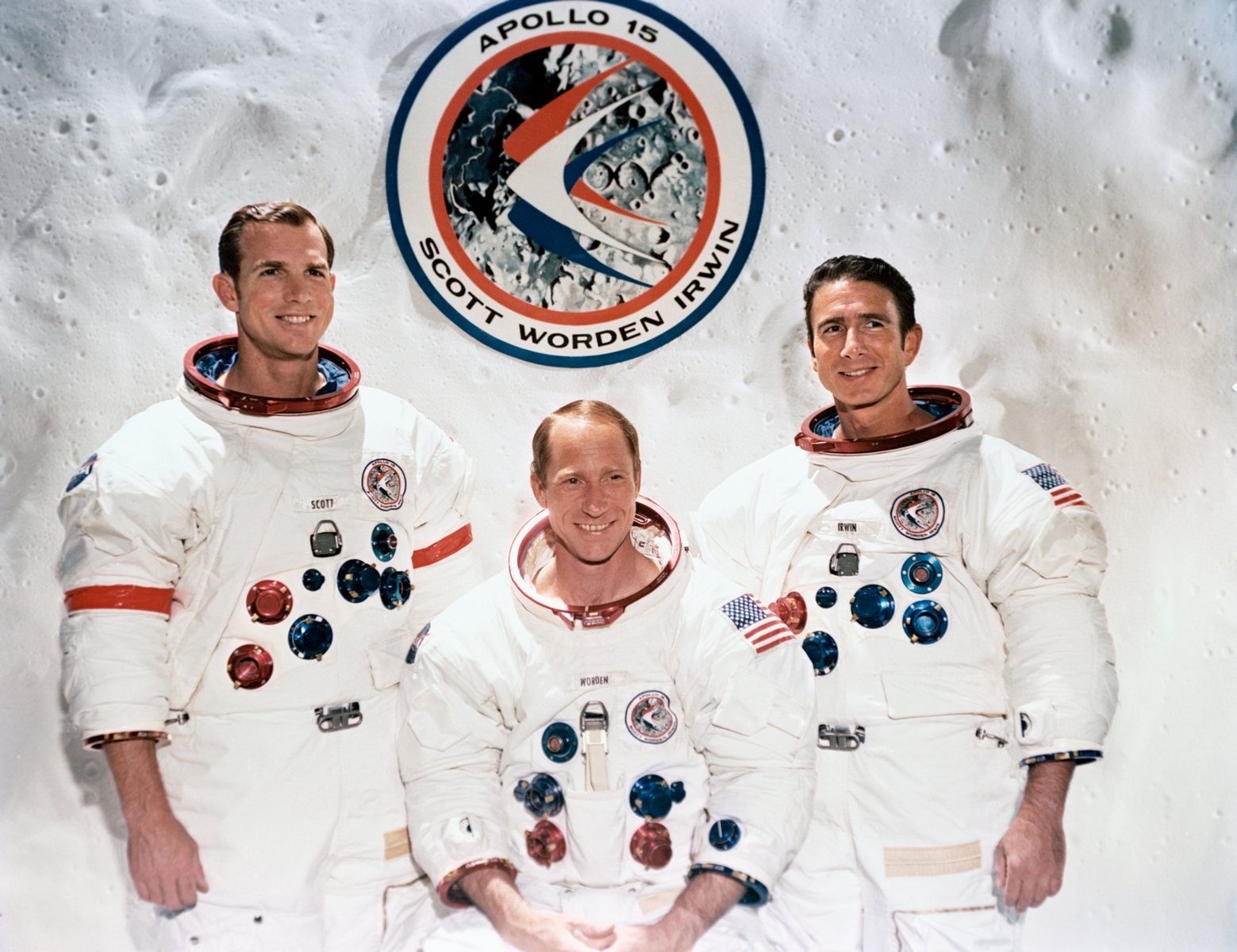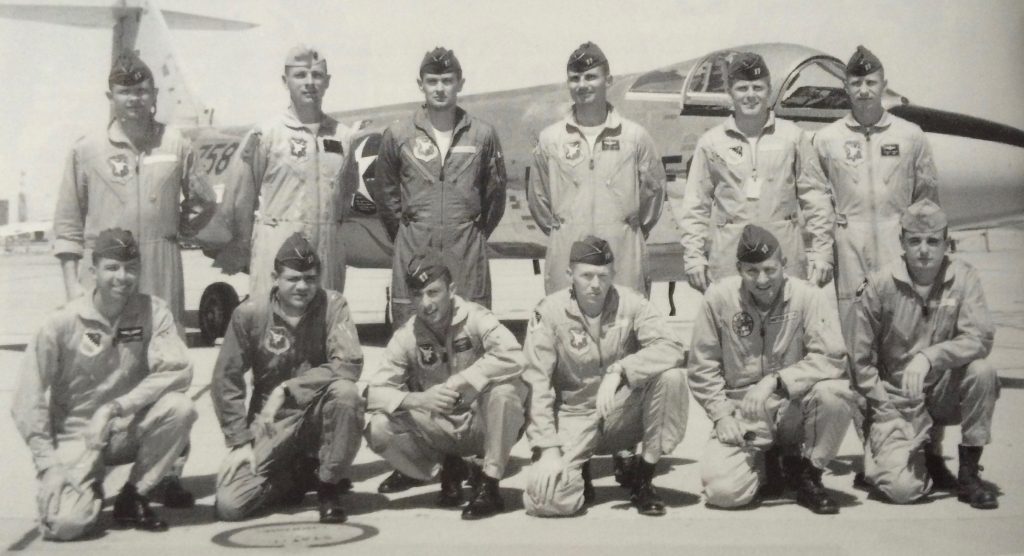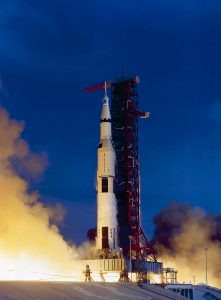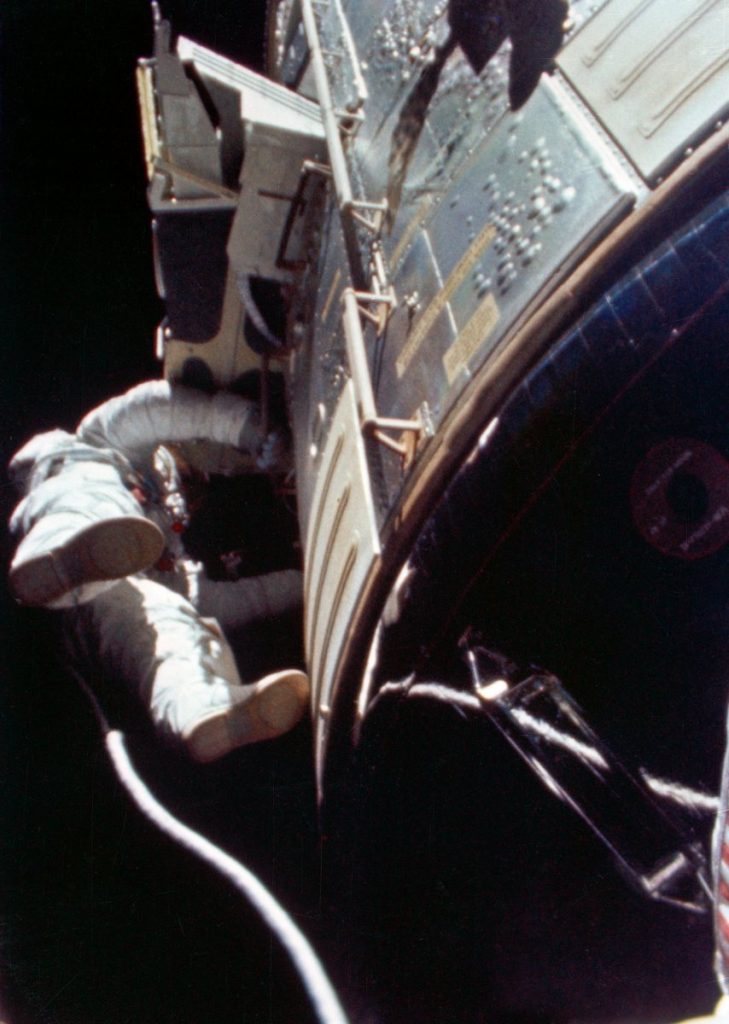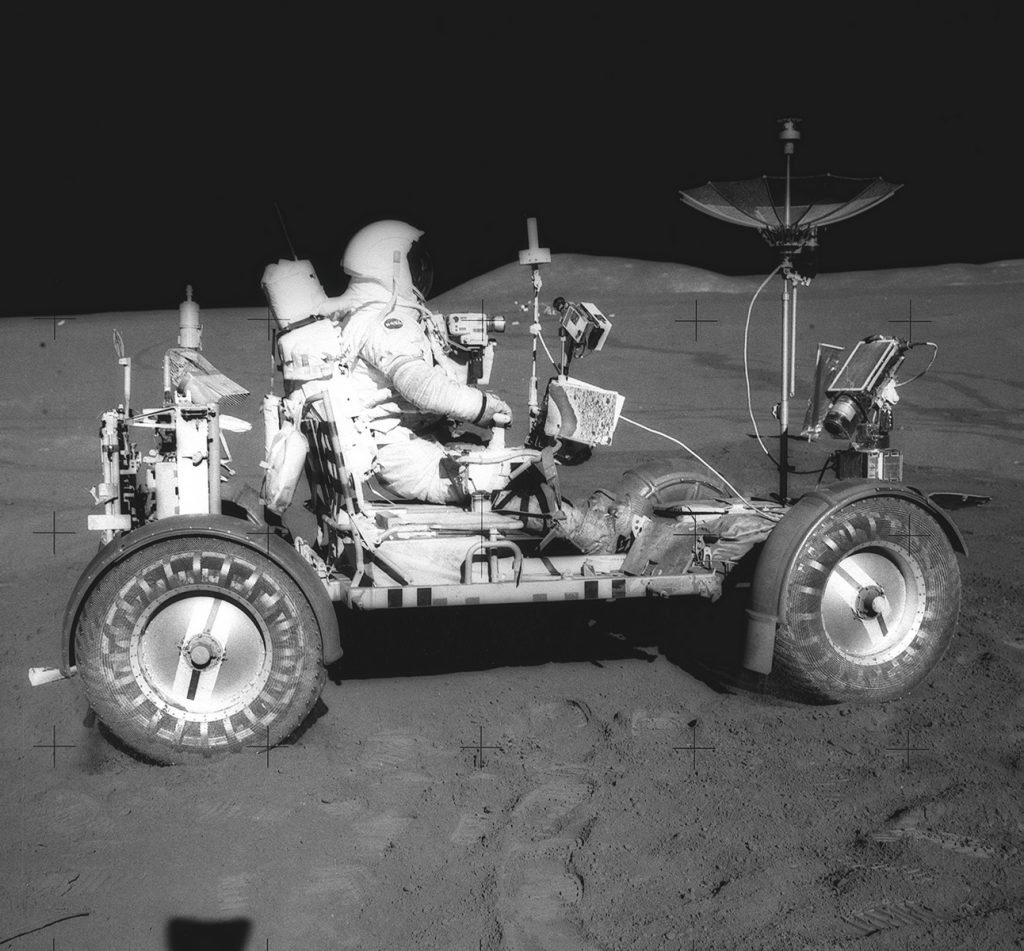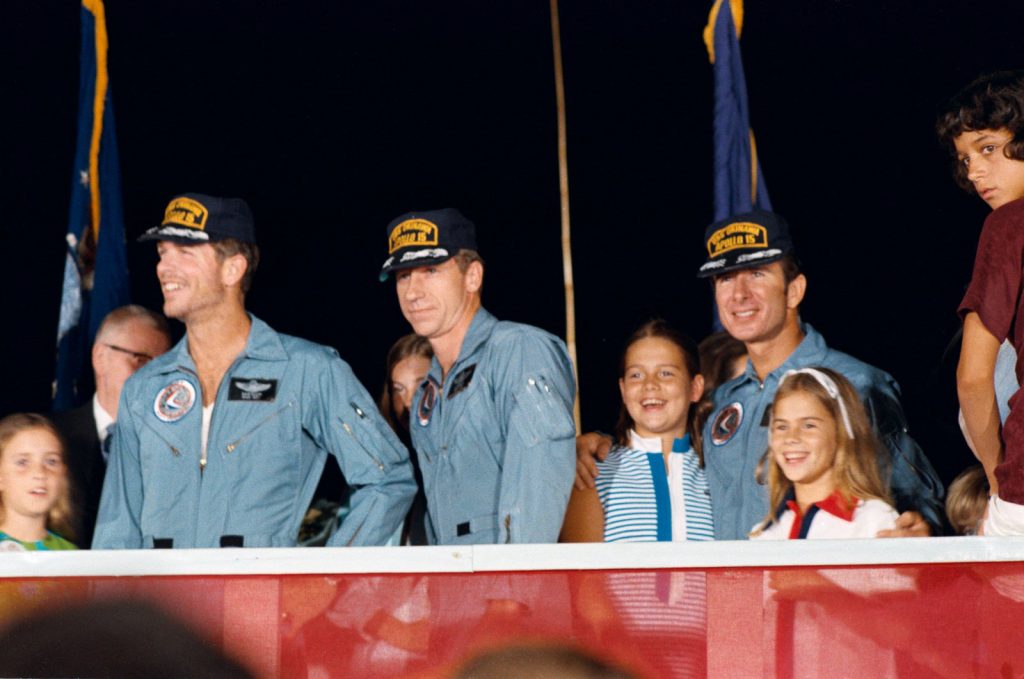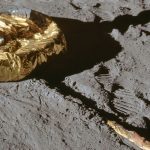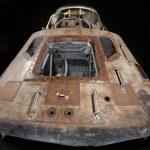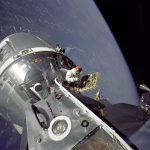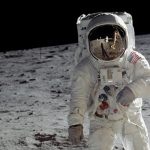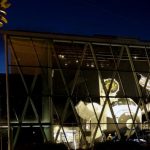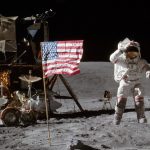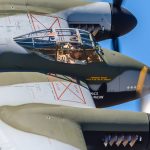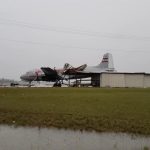As many of our readers will know, Apollo 15 astronaut Al Worden passed away on March 20th. While Apollo 15 marked NASA’s fourth successful journey to the moon, it marked several significant scientific achievements, including the first deployment of the lunar rover, the rudimentary vehicle which Worden’s crew-mates David Scott and James B. Irwin explored the lunar surface. While the two men journeyed around the Moon’s Hadley Rille and Apennine Mountains, Worden remained aboard the command module Endeavour as it orbited above. Aside from monitoring the spacecraft’s systems, Worden also conducted his own studies aboard Endeavour, the first of its kind to have its own module of scientific instruments, which included panoramic cameras for filming the moon’s surface. Interestingly, Worden had to conduct a spacewalk to retrieve film canisters from these cameras, the first such extra-vehicular activities ever conducted in deep space. Altogether, Worden logged more than 295 hours in space. One of our contributors, Luigino Caliaro, had an interesting opportunity to meet the legendary astronaut and former fighter pilot last year, and conducted a formal interview at the time, perhaps the last of its kind. We thought that our readers would be interested in hearing more…
By Luigino Caliaro
At the end of last year, during the Wings over Houston air show in Texas, I had the opportunity to meet Al Worden who very generously granted me what was probably his last official interview. Sadly, he passed away in his sleep on March 18, 2020 following a period of hospitalization.
Born on February 7, 1932 in Jackson, Michigan, Alfred “Al” Merrill Worden studied at the United States Military Academy in West Point, New York, joining the U.S. Air Force upon graduation in 1955 and entering pilot training soon after. His first assignment was on the F-104 Starfighter with the 95th Fighter Interceptor Squadron at Andrews AFB in Clinton, Maryland. With ambitions of becoming a test pilot, Worden went back to school, earning master’s degrees in astronautical/aeronautical engineering and instrumentation engineering at the University of Michigan in 1963. Soon after, Worden received a coveted exchange spot at the RAF’s prestigious Empire Test Pilots’ School in Farnborough, England. Upon his return to the U.S. he became an instructor at the U.S. Air Force’s Test Pilot School at Edwards AFB in California.
Worden’s astronaut career began almost by accident as he related during our interview: “At that time I was serving as an instructor at the USAF Test Pilot School and I had never thought about an astronaut career until in 1966 NASA invited test pilots to apply to the space program on a voluntary basis. Attracted by this new and stimulating opportunity, I decided to submit my application. To my surprise, I was selected in September 1966. It was not an easy period, the training was very long and required many hours of study to the point that I obtained three additional master’s degrees. The training was almost exhausting and non-stop, about 10-12 hours a day for five or more days a week. The practical part of astronaut training also included a good 25% use of the simulator. This difficult period has undoubtedly had negative influences on our personal and family lives, since we (astronauts) were always away from home from Sunday to Friday with very little time to devote to the family; so it was no coincidence that the divorce rate among astronauts in the lunar program was so high. I was officially assigned to the Apollo 15 mission on March 26, 1970. It was the ninth mission of the Apollo program and the fourth aimed to land on the moon. The Mission commander was David Scott, on his third flight in space. The Lunar Module Pilot was James Irwin while I was assigned the task of Command Module Pilot (CMP) which was to orbit around the moon while the other two colleagues were carrying out the experiments on lunar soil. I consider Apollo 15 to be the most successful lunar mission. In fact, we concentrated on numerous scientific experiments and compared to other missions, we were able to complete the largest number of experiments. Apollo 15 was undoubtedly considered the most scientific mission of the entire space program.”
Al Worden continued: “A lot of people asked me if I was disappointed that I hadn’t been able to walk on the moon… I always say that the Command Module Pilot pilot was more important than the role of the Lunar Module pilot. In fact, the CMP had much more important functions in the field of mission and above all it was almost an obligatory step to then become spacecraft commander. Obviously walking on the moon represented an incredible experience and opportunity, but to be honest, professionally I particularly wanted to become commander of the mission, also because automatically, it would have given me the opportunity to go and walk on lunar soil. Unfortunately, just when I was in a position to become commander, NASA canceled the latest Apollo missions. Nonetheless, with Apollo 15 I had the opportunity to experience the incredible experience of the “walk” in open space, when during the return to the earth I performed a 38-minute EVA (Extra Vehicular Activity) to recover photographic material from the Endeavor for what was the first extravehicular activity after Apollo 9 as well as the EVA carried out by an astronaut at the greatest distance from the earth.”
Indeed, the Guiness Book of World Records lists Worden as the “Most isolated human being” from his time alone in the command module Endeavour. When his crewmates were on the other side of the moon from him during his orbit, Worden was more than 2,200 miles from the next nearest human beings and more than a quarter million miles form home. He orbited the Moon 74 times alone.
As noted earlier, Apollo 15 was also important because it involved the first use of the Lunar Rover: “Yes it is true, the Rover undoubtedly demonstrated its usefulness and functionality by facilitating movements on the lunar soil allowing us to explore a little further from the landing place. However, I believe that even more important than the use of the Lunar Rover, was the fact that we were able to carry out important scientific experiments and research. We also photographed 25% of the lunar surface and before our return we also left a small satellite to orbit around the moon itself, which allowed us to collect much more data than we were able to collect on the lunar surface.”
When asked about what it was like to be aboard a gargantuan Saturn V rocket on an Apollo mission, Worden has a clear memory to share: “I have to say that thanks to the training, we were very prepared for what we would experience during the launch. However, I remember the feeling of heaviness in the initial moments of the launch… Apollo 15, being the heaviest launch of the program, the weight-thrust ratio was almost equal. We were so heavy that in the initial moments of the launch we did not perceive the sense of movement, and it was mission control that communicated to us that the launch had taken place and the Saturn had detached itself from the ramp without problems. I must also say that I was positively surprised by the docking maneuver with the LEM [Ed. the lunar lander] upon returning from the moon. It was an operation that took place as smooth as oil. David Scott, once he stabilized the LEM, positioned it about twenty meters from the Command Module, and with a very fluid and slow maneuver, I simply completed the docking operation with no problems. It was much simpler than I imagined it. Without a doubt, it was due to the extensive training and simulation on the ground.”
Obviously I could not fail to ask the classic, if banal, question about what it was like to fly in space as part of a lunar crew. Worden responded: “I must admit that, at the cost of appearing insensible, we trained so intensely and for such long periods that when the moment of the mission came, it was like carrying out another training session in the simulator. The only difference was that we were in a different environment; it was the real deal. Throughout the mission we did not encounter particular problems and everything went as planned, exactly as in training. I was also so busy and focused on my job that I didn’t have time to fully realize where I was and what I was doing. Only once I got home did I realize the experience I had just lived. Unfortunately, when you are engaged in such missions, there is no time to think about anything else. I did not feel any particular sensations even when I flew into the orbit of the hidden part of the moon, despite the fact that I did not have any contact with the outside world. I really don’t remember the feeling of being “the loneliest man in the world” as some of my colleagues experienced. I was just focused on the mission and doing it in the best possible way.”
When asked about not have had an opportunity to return to space after Apollo 15, Worden replied: “Unfortunately, NASA canceled the next three Apollo missions and therefore the possibility of becoming a mission commander disappeared, and considering that the first Space Shuttle mission was not scheduled for about ten years, I decided to devote myself to other research tasks before I left NASA in 1975.”
After leaving the Astronaut Corps, Worden moved to NASA’s Ames Research Center in Mountain View, California. He was the Senior Aerospace Scientist there from 1972-73, and then chief of the Systems Study Division until 1975.
Worden was decorated by NASA with the Distinguished Service Medal in 1971 and the Ambassador of Exploration Award in 2009, and his name was entered in the International Space Hall of Fame in 1983, the US Astronaut Hall of Fame in 1997 and International Air & Space Hall of Fame in 2016.
We hope you have enjoyed this brief look at the life of Al Worden. Many thanks indeed to Luigino Caliaro for the opportunity to publish this story.







